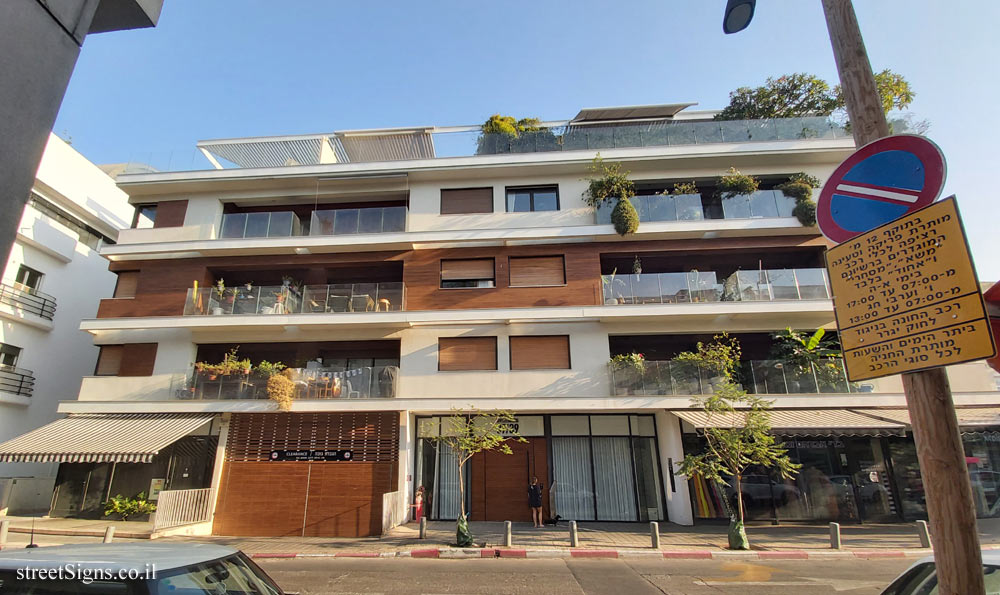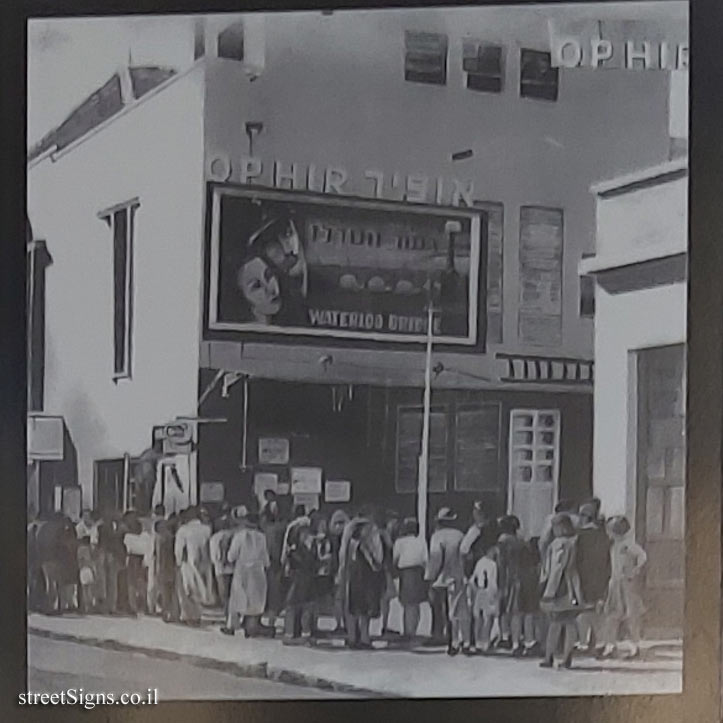Ophir cinema was designed by the engineer David Tuvia in 1928
The building that replaced the Ophir cinema was photographed that day
 Click for a larger image
Click for a larger image The picture taken in 1934 of the Ophir cinema appears in magnification
 Click for a larger image Translation of the text on the sign
Click for a larger image Translation of the text on the sign:
Gruzenberg 37/39 [Image: Ophir Cinema in 1934]
This is where the Ophir Cinema stood. The cinema was built by Moshe and Angel Carasso, a native of the Thessaloniki community and their relative Jacques Angel in 1928.
The 1920s and 1930s were years of prosperity in the young city of Tel Aviv. The then mayor of Tel Aviv, Meir Dizengoff, recognizes the need to connect to the world through the big screen and enjoy performances by the stars of the period - including Charlie Chaplin and Shirley Temple. Dizengoff addresses the members of the Carasso and Angel family and encourages them to open the cinema that will become an important cultural enterprise - "Ophir Cinema".
The cinema was built into a large hall that included over 1,000 seats and a spacious stand. The oversized cinema hall also contained compartments with four armchairs upholstered in red velvet in each compartment. The walls of the building were painted crimson with gold stripes and while the lights in the hall were dimmed, the heavy curtains were slowly moved and behind them a bright white screen was revealed, on which the film was projected. At the beginning of its journey, silent films were screened in cinemas and an orchestra was placed under the stage that completed the viewing experience for viewers. Over the years, after a voice was also added to the picture, the Hebrew subtitles were projected next to the screen on which the film was screened.
In July 1928, the opening signal for the activity of the cinema was given and the premiere of the film "The Yellow Card" was screened at the Ophir Cinema. The front of the cinema was photographed by renowned photographer Zoltan Kluger in 1934. Over the years, the cinema operated with great success and prosperity even when additional entertainment centers were added, including the "Mugrabi" and "Allenby" cinemas.
The Ophir Cinema closed its doors in 1986 and was destroyed several years later. This structure and its cultural influence left their mark clearly on the cultural life of Tel Aviv from its inception and during its next sixty years.
On this culture-soaked area, in 2016 members of the Carasso family established, through Carasso Real Estate, a new residence that draws its origins from the past.
The building was designed by Gal Marom Architects, inspired by the international style that was common in Tel Aviv in those years. The building revolves around an inner courtyard used by its occupants, and on the ground level towards the street, commercial units were located that characterized the residential buildings in Tel Aviv in its early years.
CROSUNDALN since 1933 | GAL MAROM ARCHITECTS
Learn about:

 Click for a larger image
Click for a larger image  Click for a larger image
Click for a larger image